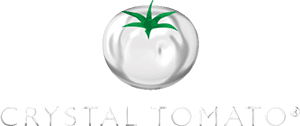Looking for the best melasma treatments in Singapore? You’ve come to the right place! When it comes to the treatment of melasma in Singapore, you have a broad spectrum of treatment options available.
But first, let’s take a closer look at the condition. What is melasma? What causes melasma? Can treatment improve melasma? Will there be side effects? Let’s dive right in!
What Is Melasma?
Melasma is a common skin condition that causes dark brown patches of pigmentation to develop on areas that are exposed to the sun.
These spots often occur across the face, most notably on the forehead, cheeks, chin, nose and above the lips.
Melasma can affect anyone but is most common in women. Only ten percent of cases are male, and it affects up to ninety percent of pregnant women. It may also have a hereditary genetic component as it is often seen to run in families.
While melasma isn’t painful, nor does it pose a health risk, it can impact your emotional well-being. Melasma individuals commonly report a negative effect on self-worth and self-confidence.
Treatment can go a long way in improving melasma and the outlook and quality of your life. What causes melasma, and what can we do to treat it?
What Causes Melasma?
There are many causes of melasma, but in most cases, it’s down to two major factors.
Exposure to Sunlight
Sun exposure can both trigger and cause melasma, especially in tropical Singapore. Melanin synthesis occurs in the melanocytes, and melanocytes are stimulated by the rays of the sun.
This is why you may have noticed people having outbreaks of melasma while, or soon after returning from beach holidays.
In the past, it was thought that it is the ultraviolet component but in recent years, visible light in the blue light range has been shown to cause melasma.
Hormonal Fluctuations
Hormonal changes can cause melasma. Women will produce more estrogen during one pregnancy than throughout their entire lives when not pregnant.
These massive hormonal fluctuations during pregnancy can cause cases of melasma. This is why melasma is sometimes known as “The mask of pregnancy”.
Similarly, hormone replacement therapy and birth control pills can trigger melasma.
How Do Experts Diagnose Melasma?
Melasma can look like several other skin conditions. A dermatologist will have the skill and expertise needed to diagnose a case of melasma.
The process begins with a physical examination of the skin at the affected site. Sometimes, to rule out other conditions, the dermatologist might need to take a small sample of skin from the affected area to analyse it further through a procedure called a skin biopsy.
This is a routine procedure that is done quickly and safely in the comfort of the aesthetic clinic.
They may also use a Wood’s Lamp, a device that shines blacklight on the skin and is used to determine the depth of melanin pigmentation at the affected site.

After the examination, the dermatologist will diagnose the patient with three possible types of melasma.
Epidermal
Epidermal melasma is when only the superficial outer layer of skin shows a higher concentration of melanin pigmentation. This type of melasma is easier to manage and responds quickly to treatment.
Dermal
Dermal melasma occurs further down in the middle layer of the skin between the outer layer of skin, known as the epidermis, and the deeper subcutaneous layers.
The third and final type is a mix of both.
Now that we understand the condition and how the experts diagnose it, what are the treatment options available to us in Singapore?
What Types Of Melasma Treatments Are Available In Singapore?
Treatment in Singapore spans a wide range of options. Let’s take a closer look at what they entail.
Topical Treatment Creams
Topical treatments are medications that are applied to the affected areas of your skin. There are multiple options available for the topical treatment of melasma. These come in the form of ointments, creams and peels.
Stay away from hydroquinone!
Hydroquinone is one such melasma treatment. A skin bleaching agent, it works by inhibiting the production of melanin in your skin and is used for a range of skin hyperpigmentation conditions.
However, hydroquinone has shown some negative side effects. It can contain carcinogens, and skincare products such as lightening creams that contain hydroquinone are banned from over-the-counter sales in most countries.
It can also cause skin irritation if used in the wrong way. In some cases, using hydroquinone as pigmentation treatment made skin conditions worse.
Knowing the side effects of treatment is an essential part of the process. Your safety is not to be taken for granted.
Retinoids
Tretinoin is a retinoid, a form of vitamin A that increases cell turnover and collagen production.
Tretinoin cream works by increasing the rate of growth of the outermost layer of skin, replacing the old skin with new skin, much faster. Quick cell turnover also opens pores and aids pigmentation removal which results in melanin elimination.
Azelaic acid is often used together with tretinoin for better results. However, Azelaic acid is banned by HSA Singapore for cosmetic products.
Hydrocortisone, a steroid cream, can help fade patches of pigmentation caused by melasma and can be used in conjunction with other treatments. It is applied onto the cheeks, forehead and other problematic spots and can be used up to four months, as directed by the dermatologist.
Don’t let melasma disrupt your day. Try the world’s most clinically proven melasma treatment today. Trusted by dermatologists, recommended by doctors.

Chemical Peels
A chemical peel is a melasma treatment readily available in Singapore where a solution is applied to the affected areas. The solution induces minor, controlled injury to patches of the skin.
The healing process then regenerates new skin as the old skin peels off. Aesthetic clinics have chemical peels of varying strengths with the best option for your skin type.
Asian skin, for example, will usually be suited to softer, more gentle peels for best results.
Cysteamine cream inhibits melanin synthesis and is commonly used as a melasma treatment option.
It can be applied all year round regardless of climate. On the downside, it produces a burning sensation on your skin. This usually goes away within thirty minutes.
Tranexamic acid in either topical or oral form decreases melasma related skin pigmentation. An effective treatment option, tranexamic acid is easy to administer and has shown only mild side effects. It is, however, not advisable to use oral Tranexamic acid over a long period.
Crystal Tomato® Skin Clarity Cream offers all the benefits of the treatments stated above in a non-invasive, safe and effective manner. Crystal Tomato® Skin Clarity Cream does not contain hydroquinone or any harsh whitening agents.
Formulated with our blend of 17 active ingredients that are suitable for all skin types, Crystal Tomato® Skin Clarity Cream just simply works. Check out our website for more details.
A dermatologist will determine which topical treatment is right for you. They may recommend one or a combination of different treatments to fit your specific needs and get the best results. That covers topical treatment in Singapore. Let’s take a look at the next step on the treatment bridge.
Laser Treatment
Lasers treatments have been used to address a variety of skin conditions in the last thirty years. Laser treatment uses focused wavelengths of radiation to target and clear melasma, leaving the unaffected areas around the site untouched.
Laser therapy also includes IPL (Intense Pulsed Light). IPL can penetrate the skin at differing levels, allowing treatment of both epidermal and dermal melasma simultaneously.
Fractional CO2 lasers treat melasma by creating tiny invisible injuries that permeate deep into the skin. The body then sends extra collagen to these microscopic injuries to heal and treat the site. The newly generated skin replaces the old and has better tone, texture and pigmentation.
Picosecond lasers pulse at a rate of one pulse every trillionth of a second. With pulses running that fast, they create sound energy rather than heat.
Without heat, the issue of thermal damage to skin tissue is removed. Pico laser treatment is said to break down sunspots and melasma patches faster and more effectively.
Q-switched lasers have a variety of dermal related uses. They have been used in the removal of birthmarks, tattoos, and yes, even melasma. Q-switched lasers release the pigments from melasma into the skin where it can be disposed of after reabsorption into the body.

The great thing about Q-switched laser therapy is that there’s virtually zero downtime. You’ll be able to go right back to your commitments as soon as the treatment is complete.
*Risks of exacerbated Melasma and PIH (Post Inflammatory Hyperpigmentation) are commonly known with treatments by lasers.
Prevention
The first step of any treatment is ensuring that the condition does not get any worse. Prevention, as they say, is better than cure. In sunny, tropical Singapore prevention and protection measures come from keeping the sun off your skin.
Always having an umbrella handy is an excellent way to minimise sun exposure. A wide brim hat will work too! However, nothing comes close to the level of sun protection you will receive from sunscreen.
Beyond Sun Protection by Crystal Tomato® is the perfect solution for Singapore’s tropical climate.
Specially designed to prevent aggravating skin pigmentation conditions while offering excellent protection from UVA, UVB and blue light rays. Light and highly absorbent, you won’t even notice you have it on.
What else would you expect from the most complete sun protection ever produced?
Don’t let melasma disrupt your day. Try the world’s most clinically proven melasma treatment today. Trusted by dermatologists, recommended by doctors.



